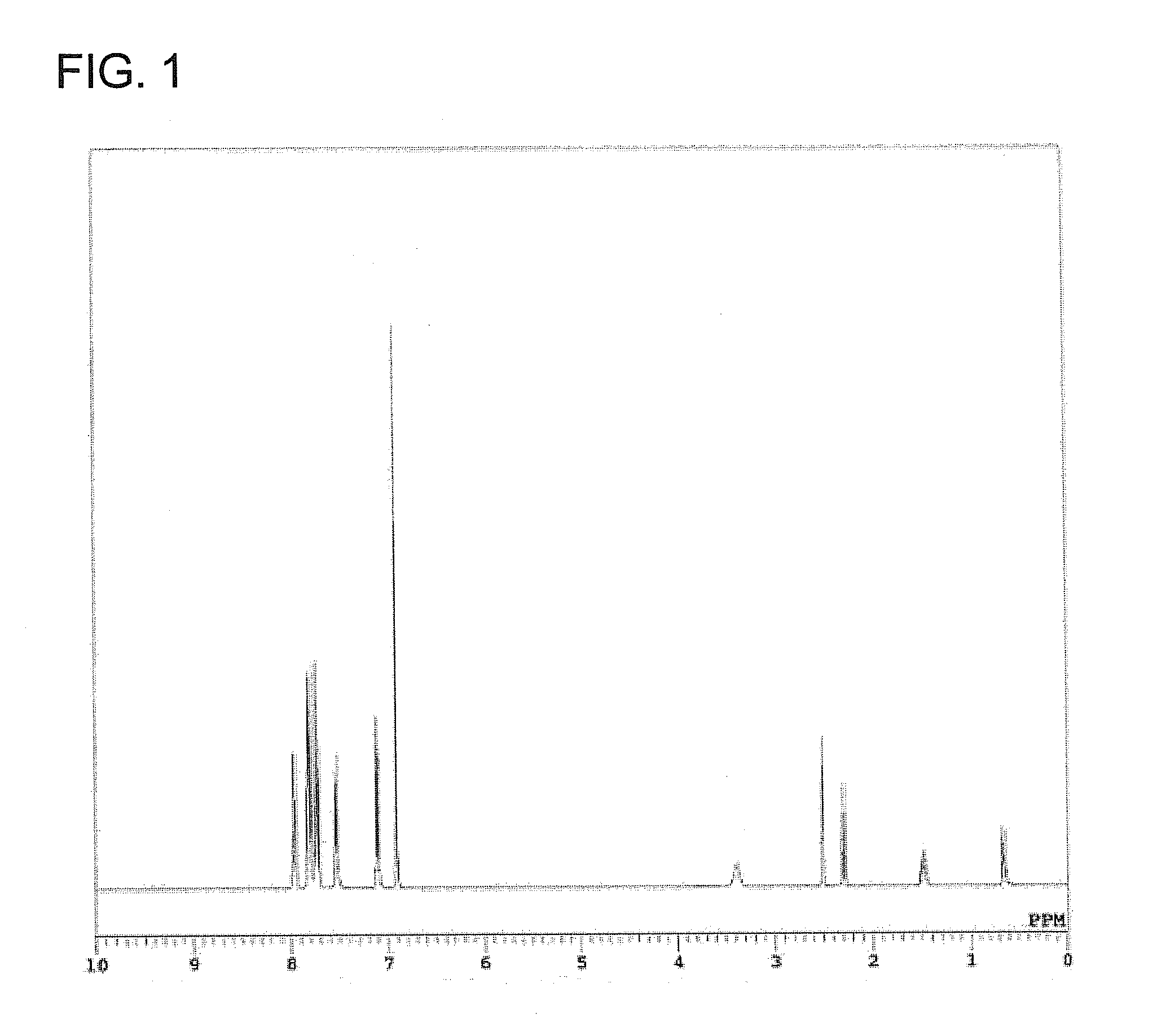Process for producing latent catalyst and epoxy resin composition
a technology of epoxy resin and latent catalyst, which is applied in the field of preparation of latent catalyst and epoxy resin composition, can solve the problems of mold defects, inability to solve (dealt with) conventional epoxy resin composition, and high demand for epoxy resin compositions to be used in encapsulating semiconductor chips therewith. , to achieve the effect of excellent fluidity, high yield and excellent curing properties
- Summary
- Abstract
- Description
- Claims
- Application Information
AI Technical Summary
Benefits of technology
Problems solved by technology
Method used
Image
Examples
example 1
[0085]In a separable flask (volume: 500 mL) equipped with a condenser and a stirrer were charged 32.0 g (0.20 mol) of 2,3-dihydroxynaphthalene, 19.6 g (0.10 mol) of 3-mercaptopropyltrimethoxysilane and 150 mL of ethanol and they were dissolved uniformly under stirring. A solution obtained in advance by dissolving 5.40 g (0.10 mol) of sodium methoxide in 20 mL of ethanol was added dropwise into the flask under stirring. Another solution obtained in advance by dissolving 41.9 g (0.10 mol) of tetraphenylphosphonium bromide in 100 mL of ethanol was then gradually added dropwise into the flask to precipitate crystals. The crystals thus precipitated were purified by filtration, washing with water and vacuum drying, whereby Compound G1 was obtained.
[0086]Compound G1 was analyzed by 1H-NMR, mass spectrum and elemental analysis. It has been confirmed by the analysis results that Compound G1 thus obtained was phosphonium silicate represented by the below-described formula (7) The yield of Com...
example 2
[0087]Synthesis was performed in the same manner as in Example 1, except that 23.6 g (0.10 mol) of 3-glycidyloxypropyltrimethoxysilane was used in place of 3-mercaptopropyltrimethoxysilane, whereby Compound G2 was obtained as purified crystals. Compound G2 was analyzed by 1H-NMR, mass spectrum and elemental analysis. It has been confirmed by the analysis results that Compound G2 thus obtained was phosphonium silicate represented by the below-described formula (8). The yield of Compound G2 was 88%.
example 3
[0088]Synthesis was performed in the same manner as in Example 1, except that 43.5 g (0.10 mol) of 3-hydroxyphenyltriphenylphosphonium bromide was used in place of tetraphenylphosphonium bromide, whereby Compound G3 was obtained as purified crystals. Compound G3 was analyzed by 1H-NMR, mass spectrum and elemental analysis. It has been confirmed by the analysis results that Compound G3 thus obtained was phosphonium silicate represented by the below-described formula (9). The yield of Compound G3 was 89%.
PUM
| Property | Measurement | Unit |
|---|---|---|
| Fraction | aaaaa | aaaaa |
| Catalytic activity | aaaaa | aaaaa |
| Fluidity | aaaaa | aaaaa |
Abstract
Description
Claims
Application Information
 Login to View More
Login to View More - R&D
- Intellectual Property
- Life Sciences
- Materials
- Tech Scout
- Unparalleled Data Quality
- Higher Quality Content
- 60% Fewer Hallucinations
Browse by: Latest US Patents, China's latest patents, Technical Efficacy Thesaurus, Application Domain, Technology Topic, Popular Technical Reports.
© 2025 PatSnap. All rights reserved.Legal|Privacy policy|Modern Slavery Act Transparency Statement|Sitemap|About US| Contact US: help@patsnap.com



